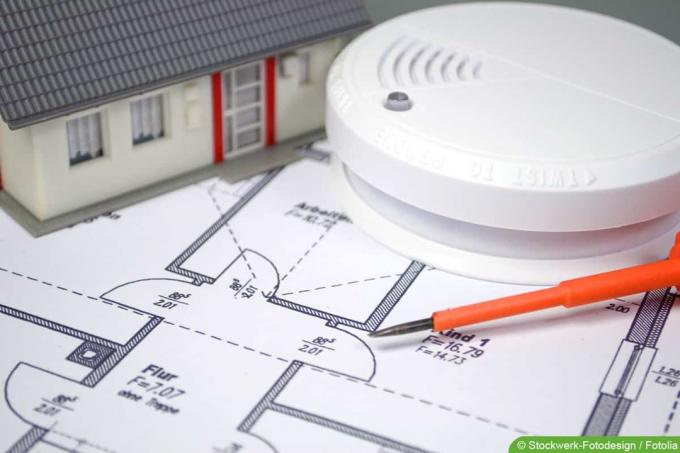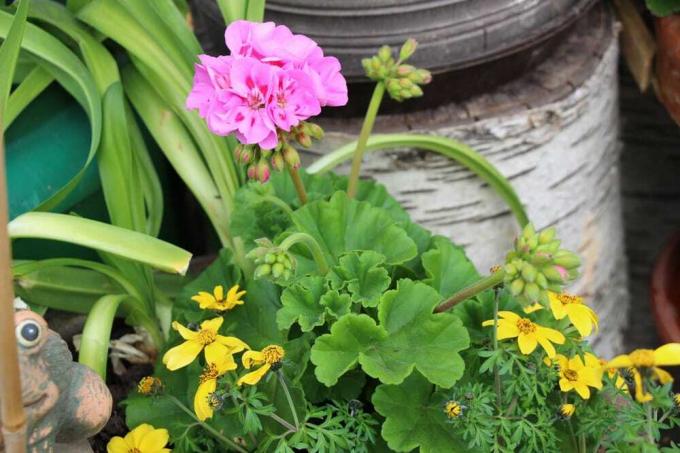

Table of contents
- chimneys
- walls
- Cover
- Furniture
- sockets and cables
- Window
- Home textiles and Co.
A fireplace can be a wonderful addition to the living space, and not just because it spreads pleasant warmth. It is also visually decorative - but potentially dangerous.
chimneys
Modern models can be installed in almost any room and spread a cozy flair. On cold winter days, they provide warmth and a pleasant light. However, the suitability for the respective room depends on various factors.
- type of operation
- need for an exhaust duct
- heat development
Not every fireplace requires a vent, which means it can also be installed in a rented apartment without a chimney. Ethanol and electric models, for example, are suitable for this.
When firing with wood, briquettes or coal, on the other hand, the smoke must be able to escape. This is only possible if there is a chimney nearby.
Tip:
It is best to ask a chimney sweep, who can give you comprehensive advice on the situation on site. He can also give suitable individual recommendations for the type of chimney.
walls
For walls, the distance to the stove depends on whether they are combustible or not. If there is no risk of fire, 20 centimeters are sufficient. The situation is different with combustible wall design.

These include, among others:
- Pictures
- wood paneling
- plastics
- wallpapers
- textiles
Caution must also be exercised with decorations such as wall tattoos or picture frames. If these are present, at least 70 centimeters are required between the walls and the stove.
Cover
Most wood-burning stoves on the market are compact, so there is usually no risk for ceilings. An exception are sloping ceilings. Here the space between the chimney and the sloping roof may not be sufficient. In the worst case, this poses a risk of fire. Even if it doesn't, discoloration can occur. That also applies to:
- plaster
- disguises
- Wall paint
For this reason, care should be taken to ensure that there is at least one meter between the stove and the ceiling.
Furniture
While furniture made of metal, such as filing cabinets, can withstand heat comparatively well, plastic, wood, glass and upholstery are much more sensitive. Therefore, the necessary distances also vary. For this reason, you should keep a distance of 80 to 100 centimeters to ensure appropriate safety. Otherwise, you must expect the following problems:
- splintering
- fire hazard
- color changes
- Burst
- brittle spots
- shortened lifespan
- forgiven
A notice:
Plastic elements can also melt or change shape. Handles or inserts are therefore exposed to an increased risk.
sockets and cables
Sufficient space must also be left for electrical devices and the socket on the wall so that the heat from the fireplace is not a hindrance. For ovens with appropriate insulation, 20 to 40 centimeters are usually sufficient.

If there is no insulation, another 80 to 100 centimeters should be maintained. This not only applies to the socket itself, but also and above all to the cables leading from it.
Window
The distance to windows is generally 80 centimetres. This is to ensure that the glass is not damaged by the heat and cracks or even bursts. This can be the case with double windows in particular, when one pane of glass heats up significantly more than the other, causing tension.
In addition, on the one hand, there are often flammable objects on windows. For example:
- curtains
- rolls
- curtains
These are also a reason why a greater distance must be maintained. On the other hand, if you are too close to the window, the running costs for the fireplace can increase because the heat is lost more quickly.
Home textiles and Co.
Textile surfaces are often found in large numbers in the rooms in which fireplaces are also installed. These include, among others:
- decorations
- Pillow
- toys such as stuffed animals
- carpets and rugs
- dried flowers
- curtains
- blankets
Curtains and curtains in particular can pose a problem if the fireplace is near a window or balcony door. Because even slight movements can get them dangerously close to the stove. Therefore, make sure that the distances are as large as possible and that direct contact is not possible.
A notice:
Also consider possible flying sparks. This can even set fire to objects that are further away. Therefore, only open the door if it is safe and you will be in the room for a long period of time afterwards. A spot that initially smolders unnoticed cannot develop into a fire.
 Home editorial office
Home editorial office
Learn more about chimney / furnace / exhaust air

How can you heat several rooms with one stove?
With a wood-burning stove, many people can fulfill their dream of heating more cheaply and at the same time more comfortably. In our guide you can find out how the right stove can heat several rooms at the same time and what you have to consider.

Chimney cladding - instructions for chimney cladding
Whether a chimney due to an improved appearance, to prevent moisture or after renovation is to be disguised, you can easily do this yourself if you have a little manual skill feature. The DIY instructions can be found in the home guide from the planning stage.

Gold poppy, Californian poppy - sowing and care
The same plant is always referred to under the name gold poppy, Californian poppy or Eschscholzia californica, which is also often called sleepyhead. The golden poppy belongs to the poppy family (Papaveraceae) and has its origins in California and the other states in the south-west of the USA. However, it can now also be found in Australia, South Africa and of course in Europe.

Combat field horsetail - this is how you destroy it permanently
The field horsetail is a dreadful terror for many gardeners because it spreads quickly and can infest large areas. In addition, the weeds can only be controlled with great effort and are relatively difficult to remove permanently.

Rose diseases - curled leaves, black spot & Co
As beautiful as the decorative rose in the garden is in its many varieties, unfortunately it is also very vulnerable. Above all, powdery mildew, sooty mildew, rose rust or curled leaves can severely affect the graceful plant. But there are tips and tricks on how to combat them, as well as preventive measures so that these diseases do not develop in the first place.

Water geraniums properly - watering tips
Which nowadays are still called geraniums or The plants available for balcony geraniums are actually called pelargoniums. Both geraniums (Geranium) and pelargoniums (Pelargonium) belong to the cranesbill family (Geraniaceae).
